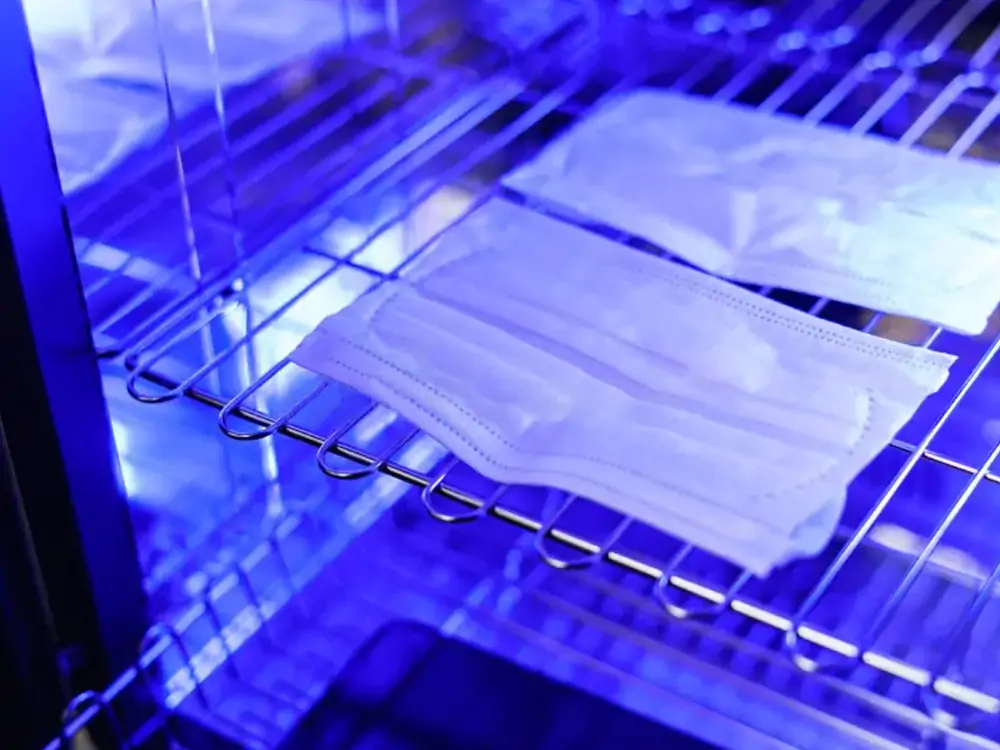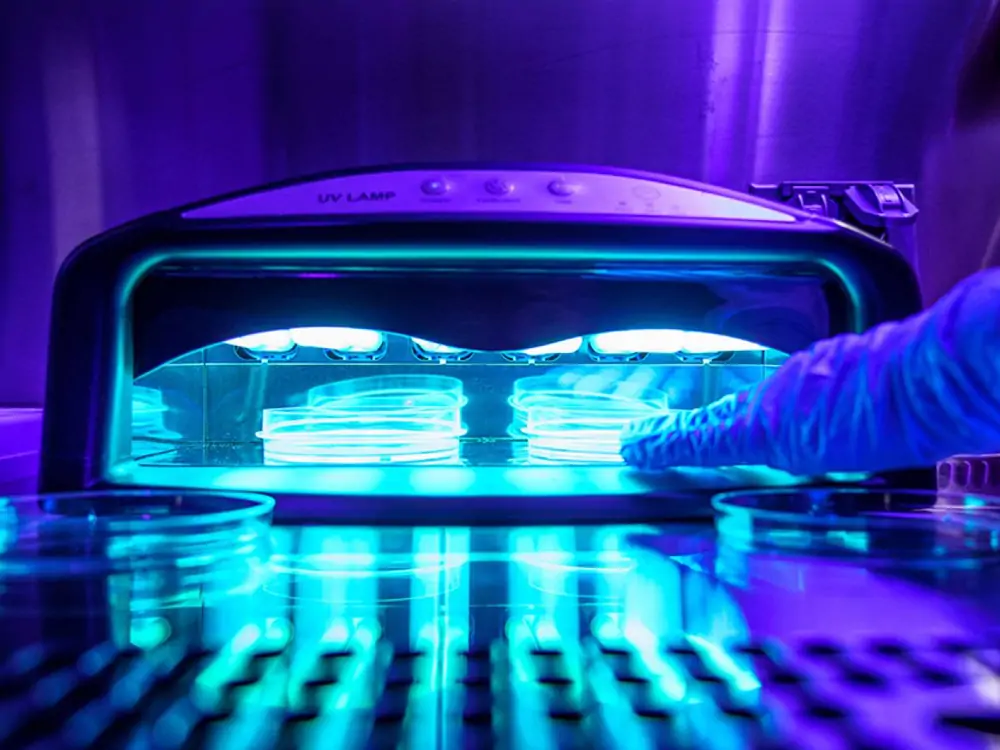What is UV testing?
UV testing, also known as ultraviolet exposure, is performed on certain materials such as plastic or fabric to test their ability to withstand the harmful UV radiation that can seriously damage a material’s life and useful properties.

This UV radiation can also be assessed on products made of polymer or fiberglass.
One can also just place the item under direct sunlight for an extended period of time; this will help study the damage of UV rays on the material.
Why are UV rays harmful?
UV radiation can be described as a form of electromagnetic radiation or ultraviolet rays that can cause significant damage to products, materials, and humans. Exposure to UV rays consistently causes discoloration, breaking or cracking, and overall deterioration. which is why we have something such as UV testing.
How are UV rays helpful?
In healthcare environments, UV rays aid in sanitation. Companies like Micom offer UVC exposure for sanitation processes.
- UVC rays help kill bacteria.
- They can create fluorescent effects, such as in phototherapy or sun tanning (which is not so healthy).
- It is also used in the medical and dental industries.
- Vitamin D is needed for a healthy human being, and for our bodies to produce vitamin D, we need UV from the sun. It strengthens our bodies and their immune systems.
- Cancer risks are lowered by UV rays, such as colon cancer.
- It helps with skin conditions such as psoriasis.
- UVB rays have shown that they can decrease high blood pressure and hypertension. UV radiation in general has proven health benefits.

UV rays can be differentiated into three types:
- UVA
- UVB
- UV
UV Test Standards
Ultraviolet ray test standards are defined below:

ASTM G154:
This standard practice refers to the operation of fluorescent UV (ultraviolet) lamps regarding nonmetallic materials and exposure to them.
ASTM D7869:
Xenon arc exposure test in reference to enhanced light and water exposure in coating transportation
ASTM D5894:
The standard practice for materials is cyclic salt fog or the ultraviolet ray exposure of metals that are painted.
ASTM D6695:
This is practiced when the Xenon arc exposure of coatings such as paint takes place.
ISO 4892-2:
The standard practice for plastics’ exposure to light from laboratory sources such as Xenon-arc lamps.
ISO 4892-3
Similar to the above, this is the standard practice for plastics in reference to exposure to light in labs, such as fluorescent UV lamps.
SAE J2412
Increased exposure of interior automotive components by the use of a controlled Xenon arc apparatus.
SAE J2527:
Increased or accelerated exposure of exterior automotive apparatus or materials. As mentioned above, using a controlled Xenon arc apparatus
ASTM D4459:
The standard practice for exposure to Xenon arcs and plastics is mainly used for indoor applications.
ISO 16474-3
The standard practice for paints and vanishes is in accordance with exposure methods to lab lighting, such as fluorescent UV lamps.
ASTM D4587
This includes test conditions for various accelerated exposures, such as coating. It is similarly conducted as ASTM practices G151 and G154. It also includes products in relation to fluorescence UV devices.
ISO 4892-3
The standard practice for exposure methods to laboratory sources of light, such as fluorescent UV lamps.
These are mostly concerned with plastics; the ISO 4892 series on the effects of lab weathering on materials such as plastics.
ASTM D4329
Under plastic exposure, this is the standard practice for UV (ultraviolet) fluorescence.
ASTM D4329 and SO 4892-3
These two have similar matters, but when it comes to content or setting, they differ in various ways.
ASTM D4799
For bituminous materials, the standard test method and test conditions for accelerated weathering, such as fluorescent ultraviolet rays and condensation, methods.
EN 1297
The standard methods for waterproofing flexible sheets are also bitumen, rubber sheets for roofing, and plastic. The artificial aging method requires extended exposure to all three elements: water, ultraviolet radiation, and elevated temperature.
These standards focus on the exposure of materials, both fluorescent and condensed, that are used for the purpose of roofing and waterproofing in various different ways.
ASTM D4799 is much like the simple ASTM G151 or G154 methods, unlike EN 1297, which are the basic standards ISO 4892-1 and ISO 4892-3.
ASTM D7238-
The standard test method for exposure to the effect of unreinforced polyolefin geomembrane in the use of fluorescent UV condensation apparatus.
It is also worth noting that a European standard is also available for the same application.
EN 12224
Geotextile-related materials and products determine weathering resistance that specifies ultraviolet lamps that are tested according to ISO 4892-3.
EN 13523-10
The standard practice for metals that are coil-coated and have resistance to ultraviolet fluorescent light plus water condensation
ISO 16474-3
The standard European practice in relation to basic ISO 16474-3 This series, EN 13523, consists of multiple parts focusing on weathering exposure outdoors, with the rest of the parts being the evaluation from the testing.
EN 927-6
This test standard focuses on paints, varnishes, and coating materials that can be used on exterior wood that might be exposed to water or fluorescent UV lamps.
UV test programs:
The main source of UV radiation is sunlight. There are many programs that allow laboratory testing for ultraviolet exposure. They factor in the environmental effects that the item will face throughout its lifetime. With the amount of information they gather, UV testing labs can evaluate how much resistance there can be to ultraviolet exposure and aging. The sun is at its brightest for a few hours around noon.
Accelerated UV testing:
By now, we understand that ultraviolet rays are damaging and what types of rays cause damage. It takes far too long to sit around waiting to see if a product can handle UV rays, which is where accelerated UV testing takes the cake. These tests expose products to high levels of ultraviolet radiation for an extended period of time, which makes it so much easier to speed up the process of evaluating the effects of the exposure. This way, we can find out in a matter of weeks, compared to a few years. Accelerated UV testing takes place in a UV lab, which is where the procedure is run and the resistance to ultraviolet rays can be verified.
Types of UV testing equipment:
There are two types of UV-aging equipment you will find on the market.
- Xenon arc
- Fluorescent light
Pros of Xenon arc:
- It can be used in various test conditions that impact the test outcome.
- The Xenon arc focuses on aging in appearance and color, which is typically a result of ultraviolet rays either indoors or outdoors or simply through glass.
- Xenon arcs can help make assumptions on the magnitude of the aging rate.
Pros of fluorescent light:
- It can also test multiple varieties of test conditions, which impact the outcome.
- Fluorescent light focuses on assessing mechanical properties.
- This method’s typical usage is for comparison purposes.
Final thoughts:
The sun’s harmful ultraviolet rays can be molded to work in our favor. Although ultraviolet rays can work for human benefit, excessive rays can lead to skin disease, cancer, and much more. UV rays have much use in the industry for sterilizing and disinfecting. Accelerated UV testing helps make products and materials safe from UV exposure. Not only that, but UV resistance in textiles is a step towards innovation in protection from the sun. Climate change and the current condition of the ozone layer will surely increase the need for UVB and UVC rays to work to protect humans and materials from sun damage. The current condition of UV machinery and equipment is quite promising, but I think more work is yet to be done.
For more environmental test chamber, Please visit: https://chiuventionclimatechamber.com
For more environmental test simulation programmes,environmental testing knowledge, instrument knowledge, and environmental testing laboratory knowledge, please contact us: [email protected]